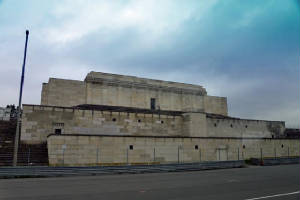Nuremberg First mentioned in 1050, Nuremberg received a charter in 1219 and was made a free imperial city by the end of the 13th century. The cultural flowering of Nuremberg in the 15th and 16th cent. made it the center of the German Renaissance. Among the artists who were born or lived there, the painter and printmaker Albrecht Dürer was the greatest.
After Adolf Hitler came to power, Nuremberg was made a national shrine by the National Socialists (Nazis), who held their annual party congresses nearby from 1933 through 1938. The city was the home of the Nazi leader Julius Streicher and became a center of anti-Semitic propaganda. At the party congress of 1935 the so-called Nuremberg Laws were promulgated; they deprived German Jews of civic rights, forbade intermarriage between Jews and non-Jews, and deprived persons of partly Jewish descent of certain rights. Until 1945, Nuremberg was the site of roughly half the total German production of airplane, submarine, and tank engines; as a consequence, the city was heavily bombed by the Allies during World War II and was largely destroyed. After the war, Nuremberg was the seat of the international tribunal for war crimes.
The city has rebuilt most of its cathedrals, castles and monuments in the years after the war, using original materials as much as possible.The one thing that cannot be rebuilt are the many stained glass windows, destroyed in the war.In their place you see plain glass panels.
Along with his plans for the world capital Germania, Albert Speer made the plans for the world’s largest stadium which was to be located on the rally grounds. Derived from the Panathenaic Stadium of Athens, it would have offered 400,000 seats. It was to get the shape of a horseshoe; planned dimensions: length: 800 m, width: 450 m, height: 100 m, building area 350,000 m².
The laying of the foundation stone was on 9 July 1937. It was to be finished for the party congress in 1945. In 1938, the construction began with the excavation. It was stopped in 1939, but during the whole war, the casting pit had to be kept dry from entering ground water. After the war, the northern half of the pit filled up with the water and is today called Silbersee (silver lake), the southern half was used to deposit the debris of the destroyed downtown Nuremberg. This red brick abandoned construction is what’s left. Plans are being made to put this colossus to use. Original plans called for the entire center to covered. SuperDome anyone?
Okay, so who is going to back up?

